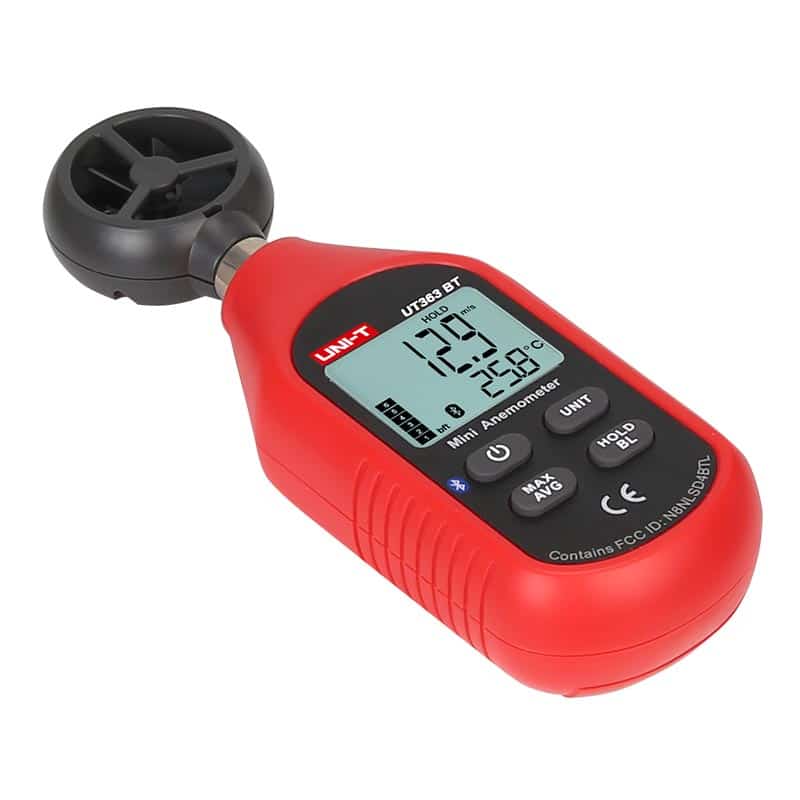All You Required to Learn About Anemometers: Just How They Function, Why They Issue, and Where to Use Them
Anemometers, however commonly overlooked in the world of clinical instruments, play an important role in different areas, supplying useful understandings into wind rate and air movement patterns. As we dig right into the intricacies of anemometer modern technology, we will certainly discover the internal workings of these devices, their value, and the crucial considerations when picking the appropriate anemometer for specific applications.

Anemometer Fundamentals
A necessary tool made use of to gauge wind speed and instructions, the anemometer plays an important duty in meteorology and various industries. An anemometer normally is composed of three or 4 cups that rotate in the wind, a vane that points right into the wind, and sensing units to track the activities or turnings.
There are different types of anemometers offered, including mug anemometers, vane anemometers, hot-wire anemometers, and sonic anemometers, each with its special functions and applications. Cup anemometers are commonly utilized for basic wind rate dimensions, while vane anemometers are preferred for directional measurements. Hot-wire anemometers are appropriate for low airspeeds, and sonic anemometers are optimal for high-precision dimensions in study and commercial settings. Recognizing the basics of anemometers is crucial for exact wind data collection and evaluation throughout different fields.
Principles of Anemometer Operation
Building on the foundational understanding of anemometer fundamentals, the concepts of anemometer procedure clarify the auto mechanics behind wind speed and instructions measurements. Cup anemometers, for instance, have three or more mugs that record the wind, triggering them to spin quicker as the wind speed increases. Hot-wire anemometers rely on a warmed cord that cools down as wind passes over it, with the price of cooling figuring out the wind speed.
Importance of Anemometers
The significance of anemometers in meteorology and numerous industries can not be overemphasized. Anemometers play an important role in determining wind rate and direction, providing vital data for weather projecting, environment studies, environmental monitoring, and air travel operations. Meteorologists depend on anemometers to gather exact wind information, assisting them recognize weather patterns, predict tornados, and issue prompt warnings to the public. In industries such as building, agriculture, eco-friendly energy, and maritime procedures, anemometers are utilized to enhance processes, guarantee safety, and raise efficiency. As an example, wind farm operators use anemometers to evaluate wind problems and make the most of electricity production from wind generators. In the maritime industry, anemometers aid ship navigation by offering real-time wind check it out details to captains, assisting them make notified decisions to make sure secure trips. Generally, anemometers are essential tools that add dramatically to safety and security, efficiency, and notified decision-making in weather forecasting and a large range of sectors.
Applications Across Numerous Industries
Applications of anemometers cover throughout varied sectors, showcasing their convenience and utility past meteorology. In the sustainable power industry, anemometers play a vital duty in analyzing wind problems for wind farm positionings, making sure optimal power production. Industries like building and mining utilize anemometers to keep track of wind rates, crucial for safety and security methods, particularly when functioning at elevations or in open-pit mines where strong winds can position dangers. Anemometers are additionally integral in the aeronautics sector, assisting pilots in comprehending airspeed and wind go to my blog direction for risk-free liftoffs and touchdowns. The maritime sector benefits from anemometers for ship navigation, helping seafarers prepare for weather condition adjustments and readjust paths accordingly. In agriculture, anemometers assist farmers in managing crop spraying by supplying real-time data on wind rate to stay clear of drift. Anemometers discover applications in Heating and cooling systems to optimize air flow and improve energy effectiveness in buildings. The varied usage situations of anemometers emphasize their value across different sectors, highlighting their indispensable duty in boosting operational safety and performance (anemometer).

Choosing the Right Anemometer for Your Needs
For basic objectives, a mug anemometer is appropriate for determining wind rate, while a vane anemometer provides wind direction information. Hot-wire anemometers are ideal for reduced airspeed measurements, and ultrasonic anemometers provide high accuracy and durability.

Verdict
In conclusion, anemometers play a critical duty in gauging wind rate and instructions across various markets. Comprehending the concepts of anemometer operation is crucial for selecting the right gadget for certain requirements. From weather forecasting to aviation, anemometers are vital tools for ensuring and accumulating precise data safety in various applications. When choosing the most ideal gadget for determining wind conditions., it is vital to think about the relevance of anemometers in order to make educated decisions.
There are different types of anemometers readily available, including cup anemometers, vane anemometers, hot-wire anemometers, and sonic anemometers, each with its special functions and applications. Mug anemometers are generally made use of for fundamental wind speed measurements, while vane anemometers are chosen for directional measurements. Hot-wire anemometers are ideal for low airspeeds, and sonic anemometers are optimal for high-precision dimensions in research and commercial settings.Structure on the fundamental understanding of anemometer essentials, the concepts of anemometer operation illuminate the technicians behind wind speed and instructions measurements. For general objectives, a cup anemometer is suitable for determining wind rate, while a vane anemometer provides wind instructions information.